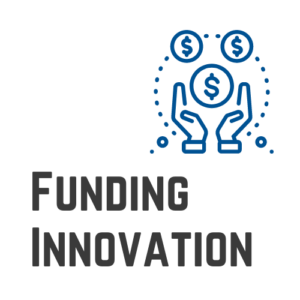Stop Misallocating Resources
Despite the accelerating pace of disruption, most organizations are not allocating enough resources to innovation—be it talent, training, or investments. Organizations should be funding innovation and spending resources on training individuals in innovation processes. They should also be hiring entrepreneurial talent, allocating new incentive systems, investing in internal and external startups, and other innovation initiatives.
Short-term Business Demands
 In times of change and uncertainty, many companies divert innovation resources to fulfill short-term business demands. For instance, a recent Gartner survey reported that 80% of R&D leaders felt pressure to scale down or kill breakthrough projects in favor of more immediate priorities.
In times of change and uncertainty, many companies divert innovation resources to fulfill short-term business demands. For instance, a recent Gartner survey reported that 80% of R&D leaders felt pressure to scale down or kill breakthrough projects in favor of more immediate priorities.
In contrast, the ones that ARE investing are often misallocating resources. Too many provide sizable budgets with long timeframes and traditional milestones. They try to pick the “winners” and only invest in a few ideas. Organizations also overestimate the number of resources required to get an idea off the ground. They allocate resources with the same infrastructure and specialization used to run their existing businesses. They think they need a team of specialists, a dedicated runway, marketing budgets, and infrastructure for any project regardless of the stage or viability of the idea.
Metered Funding Strategy
The funding allocation process in venture capital and startups is one of the many takeaways that we’ve learned from investing in startups that can apply to launching new ideas anywhere. An incremental, metered funding approach, like that used in venture capital, can be appropriate for early-stage innovation investing.
In this model, ideas receive funding and are built based on a team’s ability to find traction and hit the next milestone. Investors incrementally fund startups to the next milestone. Then they review their progress and continuously bet on the ideas showing traction and growth. This stage-gated funding model enables oversight and incremental resource allocation through the uncertainty of launching and growing a new idea. Companies can use this same systematic approach to fund early ideas internally.
Getting Started with Minimal Budget
Above all, the good news is that the amount of resources required to start has fallen dramatically. Given today’s tools to prototype, test, and validate new ideas, it’s never been easier for individuals with minimal budgets to start. Once these new ideas show traction or support, they can be scaled and built out more robustly. In other words, having the freedom and ability to test more ideas to find the ones that show promise is a massive advantage from years past.
How much are you allocating towards innovation? Let us know at brian@insideoutside.io.
More Innovation Tips
- Validating Innovation
- Transform Innovation Ideas to Outcomes
- Organizations Need Innovation Accelerators
FREE INNOVATION NEWSLETTER & TOOLS
Finally, get the latest episodes of the Inside Outside Innovation podcast, in addition to thought leadership in the form of blogs, innovation resources, videos, and invitations to exclusive events. SUBSCRIBE HERE
In addition, you can also search every Inside Outside Innovation Podcast by Topic and Company. For more innovations resources, check out IO’s Innovation Article Database, Innovation Tools Database, Innovation Book Database, and Innovation Video Database.

